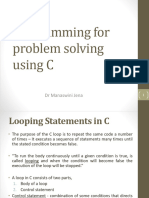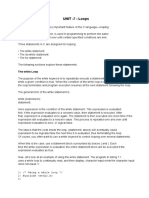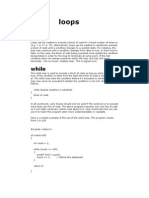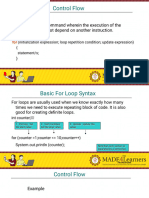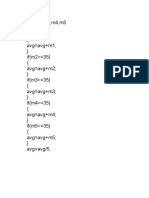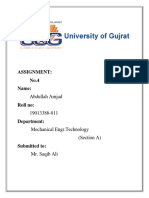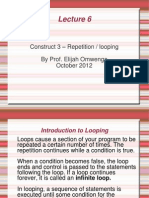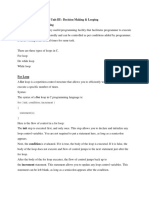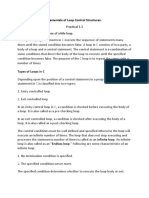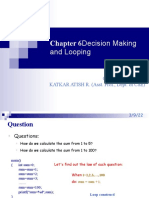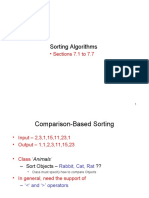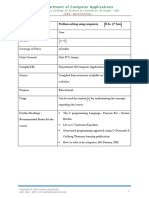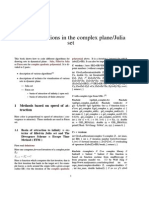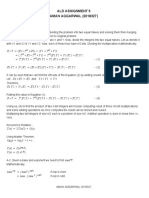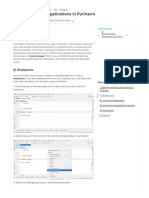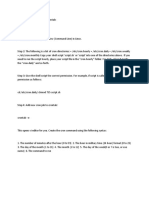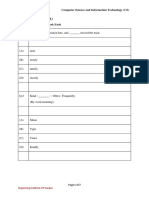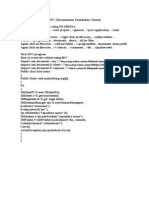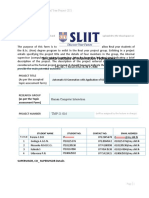0% found this document useful (0 votes)
71 views13 pagesThe Islamia College of Science & Commerce, Srinagar - J &K: (UGC-Autonomous)
The document discusses loops in C programming. It describes three types of loops in C - while loops, do-while loops, and for loops. While loops check the loop condition at the start of each iteration. Do-while loops check the condition at the end of each iteration, so the body is always executed at least once. For loops are commonly used when the number of iterations is known. Examples are provided to illustrate how to use each type of loop.
Uploaded by
nofiya yousufCopyright
© © All Rights Reserved
We take content rights seriously. If you suspect this is your content, claim it here.
Available Formats
Download as PDF, TXT or read online on Scribd
0% found this document useful (0 votes)
71 views13 pagesThe Islamia College of Science & Commerce, Srinagar - J &K: (UGC-Autonomous)
The document discusses loops in C programming. It describes three types of loops in C - while loops, do-while loops, and for loops. While loops check the loop condition at the start of each iteration. Do-while loops check the condition at the end of each iteration, so the body is always executed at least once. For loops are commonly used when the number of iterations is known. Examples are provided to illustrate how to use each type of loop.
Uploaded by
nofiya yousufCopyright
© © All Rights Reserved
We take content rights seriously. If you suspect this is your content, claim it here.
Available Formats
Download as PDF, TXT or read online on Scribd
/ 13












